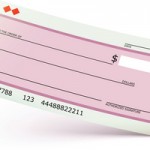 Given the fact that they’re used less frequently, you might think that money orders would have faded away or become wholly irrelevant in the world of personal finance. Since getting a credit card has become relatively easy, and anyone with a checking account can write a check or even use their debit card to make a purchase, you might even wonder why some people bother with money orders at all.
Given the fact that they’re used less frequently, you might think that money orders would have faded away or become wholly irrelevant in the world of personal finance. Since getting a credit card has become relatively easy, and anyone with a checking account can write a check or even use their debit card to make a purchase, you might even wonder why some people bother with money orders at all.
And many individuals may be unfamiliar with the money order. Essentially a money order is a payment device that’s similar to a check, except that you don’t have to have a checking account in order to make one.
Here is some banking advice and tips for deciding when it makes sense to get a money order, and how to go about doing to.
The Basics. In order to get a money order, you go to a money order vendor, give them the amount you want to have your money order created for (plus a small fee), and they’ll give you the money order in the amount you paid for, ready for you to complete with the payer and payee information.
Required Information. In order to provide you with some degree of protection against loss or theft of the money order, you’ll need to complete the name and address information about yourself and the person or company you’ll be sending the money order to.
A Variety of Options. Even if you haven’t purchased a money order recently, you’ll find that you likely have a number of different local options for buying one. Your local post office sells money orders, and your local bank or credit union likely does as well. Even the customer service center of your neighborhood grocery store or Wal-mart is likely to sell money orders, too.
Compare Fees. Perhaps surprisingly, you may find a wide range of fees applicable to getting a money order from different locations. You might find a money order provider that will only charge you a dollar or two, while others might charge upwards of $10. If you’re only buying money orders infrequently then you might decide that the time you save by purchasing one at the most convenient location is worth spending a few extra dollars. (On the other hand, if you need to buy a large number of money orders, then you’ll want to find the most economical option.)
Keep Your Receipt. As with any other payment you make, it’s always a good idea to make sure to keep the receipt that you’ll get when you purchase a money order. Not only will this receipt help you with your general financial records, it will be required if you need to request a refund on your money order (as would be the case, for example, if you lose your money order before sending it to the recipient).
So when would you ever need to use a money order? In short, because of the relative inconvenience of getting a money order, you’re only likely to do so when you’re entering into a transaction when the seller requires one, or where you’d prefer not to pay with cash (such as buying an item from Craigslist, for example).
Tags: Banking Advice, money order
This entry was posted
on Monday, May 19th, 2014 at 4:04 pm and is filed under Checking.
You can follow any responses to this entry through the RSS 2.0 feed.
You can leave a response, or trackback from your own site.
 Given the fact that they’re used less frequently, you might think that money orders would have faded away or become wholly irrelevant in the world of personal finance. Since getting a credit card has become relatively easy, and anyone with a checking account can write a check or even use their debit card to make a purchase, you might even wonder why some people bother with money orders at all.
Given the fact that they’re used less frequently, you might think that money orders would have faded away or become wholly irrelevant in the world of personal finance. Since getting a credit card has become relatively easy, and anyone with a checking account can write a check or even use their debit card to make a purchase, you might even wonder why some people bother with money orders at all.











